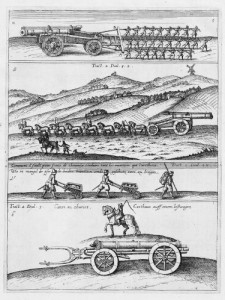(This is the first article about the fundamentals of logistics in health and aid. A number of the issues that I outline here will come back in future postings.)
The health of a supply line is often measured by the ‘five rights’:
- Are the right goods (including in the right quality[1]) being delivered?
- Are they delivered in the right quantity?
- Are they delivered to the right location?
- Are they delivered at the right time?
- Are they delivered at the right price?
Of course, these same five rights are important in health and aid logistics as well, but the emphasis will often be different from ‘normal’, commercial logistics settings.
Starting with health logistics, it will be clear that the first four rights will get much more emphasis than in a commercial setting. E.g., a supermarket chain can decide not to sell lettuce for a day if the lost profit margin would be less than the extra cost of getting it to its stores; ethically, a hospital cannot easily weigh the lives and health of its patients against the costs — and in any case such a trade-off would make an interesting PR exercise. In other words: the constraints in medical health are mainly in the first four rights, and are much more rigid than in most (but not all) commercial settings. However, in resource-constrained settings (like in most developing countries), a lack of efficiency can mean that we have less resources to purchase life-saving supplies: health logistics in developing countries is a constant balancing act, where each error in either direction can mean loss of life or increased suffering.
In emergency aid, this holds true to an even greater extent: ‘the right quantity’ often will be massive, ‘the right quality’ is often not easy to determine in the hectic environment of an aid operation (hence often large amounts of supplies arrive that are in the end not used), and ‘the right location’ more often than not is extremely difficult to access due to shattered infrastructure, natural obstructions, or security issues, and will often be far away from the origin of the goods. This does not leave much space to experiment with ‘cheap’ alternatives. However, that does not mean that we should ignore efficiency: if gains can be made without endangering the effectiveness of our aid, why not use them? This will be the subject of a future posting — for now, let me just make the observation that I feel that we sometimes too easily allow ourselves to forget efficiency in our struggle for aid effectiveness.
In developmental aid[2], we are much more able to emphasise the cost side of logistics. Yes, our target areas still are often to access, and yes, the scale still often is massive, but we now can plan and forecast more easily (allowing to determine the right goods, the right quantity, and the right time more accurately), and hence we can plan our procurement and transport activities much further in advance. This implies that we can also procure much closer to our target areas, which by itself will already help decreasing cost. Most excuses for inefficient logistics that we see in emergency aid do not exist in development aid, and hence inefficient supply lines are a lot less acceptable.
Footnotes
[1] Especially in medical logistics, sometimes a sixth ‘right’ is added: are the goods delivered in the right condition. However, this is arguably included in the first right: e.g. expired drugs will definitely not have the required quality.
[2] Yes, I am aware that this is an artificial distinction and that there is a continuum from emergency to developmental aid. However, please humour me and allow me to use this divide for our analysis.


{ 0 comments… add one now }
{ 4 trackbacks }